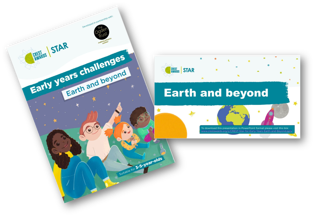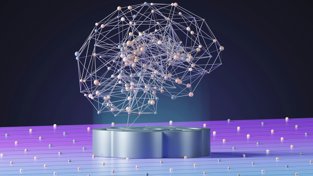Posted:
17 June 2024
Widening access to STEM resources for SEND learners
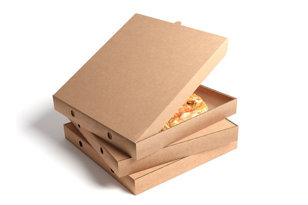
The British Science Association (BSA) recently worked alongside Rob Butler, Registrar at the Association for Science Education (ASE), to redevelop and adapt the CREST Award resource, ‘Design and make a pizza box’, making it more accessible for learners with special educational needs and disabilities (SEND). To mark Learning Disability Week 17-23 June, we've explored the process of adapting the resource and why it's vital.
What is CREST and the Bronze Award resource ‘Design and make a pizza box’?
The BSA’s CREST Awards are online resources and activity packs that help empower children and young people to think and act like scientists and engineers as they undertake hands-on, investigative projects.
The Bronze CREST Award ‘Design and make a pizza box’ is suitable for children aged 11+ with SEND, and challenges learners to think about what makes a good pizza box; explore its structure and decide what information needs to be written on the box. Once learners establish a good understanding of a pizza box, they are encouraged to build their own box based on the weight and shape of a pizza.
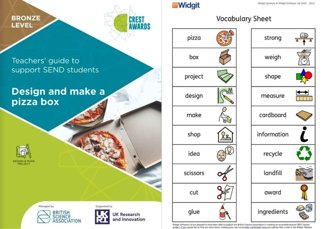
This resource previously existed as a Silver CREST Award ‘The ultimate pizza box’, so adapting it to cater specifically to the needs of learners with SEND helps to ensure that opportunities to build science capital are inclusive to all learners.
The principles behind CREST drive forward the design of inclusive and student-centred resources (e.g. student-led, hands-on), therefore many can be, and are already used by teachers in special schools. This Bronze Award resource was specifically adapted to make STEM education as accessible as possible for students with SEND to promote inclusivity for all learners.
Rob’s 20 years of experience as a science teacher in a special school, and current roles as head of the ASE’s Inclusive Science Education Group and Professional Development Leader for STEM Learning UK, was invaluable in the development of the resource. Drawing on his practical knowledge and first hand insights, it was possible to ensure that the resource would meet the real-life needs of children with SEND and allow them to discover their love of science.
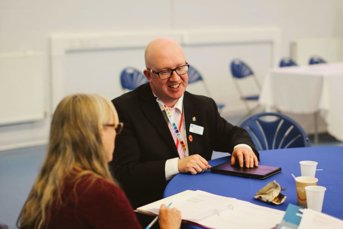
Rob Butler
Discussing why expanding access to STEM learning for children with SEND is important, Rob said:
We know that everyone can play a part in the science economy, whether it’s by being better informed and being able to spot misinformation, or by performing a role involving STEM skills that they may not have considered. We wanted to help develop these skills in an engaging way that is relevant to all learners.
Adapting the resource
When discussing the process of adapting the resource, Rob shared that it was important not to assume that all learners have had the same prior experiences or abilities. The core of the task was ensuring the resource was accessible, but without removing the science or lowering the challenge.
This includes supporting reading and processing by removing unnecessary jargon, using a clear and easy to read font with no italics or underlining, and including plenty of visuals.
It’s also best to reduce the amount of unstructured writing required, meaning learners aren’t asked to write large blocks of explanation. Instead, they are prompted with short, easy to answer questions to explain their thinking.
Another important consideration for the resource was providing subject-specific vocabulary so learners would be supported in recording their scientific thinking and communicating what they have accomplished. Additionally, the resource includes scaffolds for capturing progress and writing up projects that are flexible and allow evidence to be presented in a variety of formats to suit learners’ capabilities.
Speaking on the way the activities are designed, Rob said:
We now have a vocabulary for what teachers of learners with SEND have always known. We know about the working memory and of cognitive science. We understand better how learners with SEND may have a reduced working memory which increases the need for smaller more manageable activities that don’t overload learners.
To support teachers, the resource also includes instructions and guidance for how to run the activity in the classroom. Alongside the guidance booklet, teachers are provided with a visual presentation to prompt questions for the students, such as ‘What makes a pizza?’ and ‘What types of pizza have you eaten?’, helping them connect with the concept based on their own experience and creating a fun and engaging discussion that encourages scientific thinking.
Building confidence and aspirations in learners with SEND
According to the Child Mind Institute, learners with additional needs often suffer from low self-confidence and low self-esteem in the classroom due to challenges they face in academic settings. Therefore, it is essential to scale tasks to meet their level and needs in order to build their self-confidence and give them the experience to spark a life-long love of science. As part of the development process, Rob also explored how effective and accessible science activities can build confidence and aspirations in learners with SEND.
Expanding on this, Rob said:
It’s important that we create resources that let learners experience moments of success and to develop self-confidence and a love of learning. We also need these learners to see science as being for them and open their minds to the possibility of a possible STEM career.
In classroom or home practice, an important piece of the puzzle is helping learners to understand how science relates to them in the context of their lives. This includes building and establishing routines for learners so that doing practical work becomes automatic, reducing cognitive load so learners don’t have to think about how they do something, but about what is happening instead.
Relating it to his own classroom experience, Rob said:
I also created resources to let my learners experience success and break their learning down into more manageable pieces which helped develop their self-confidence and their identities as possible scientists.

